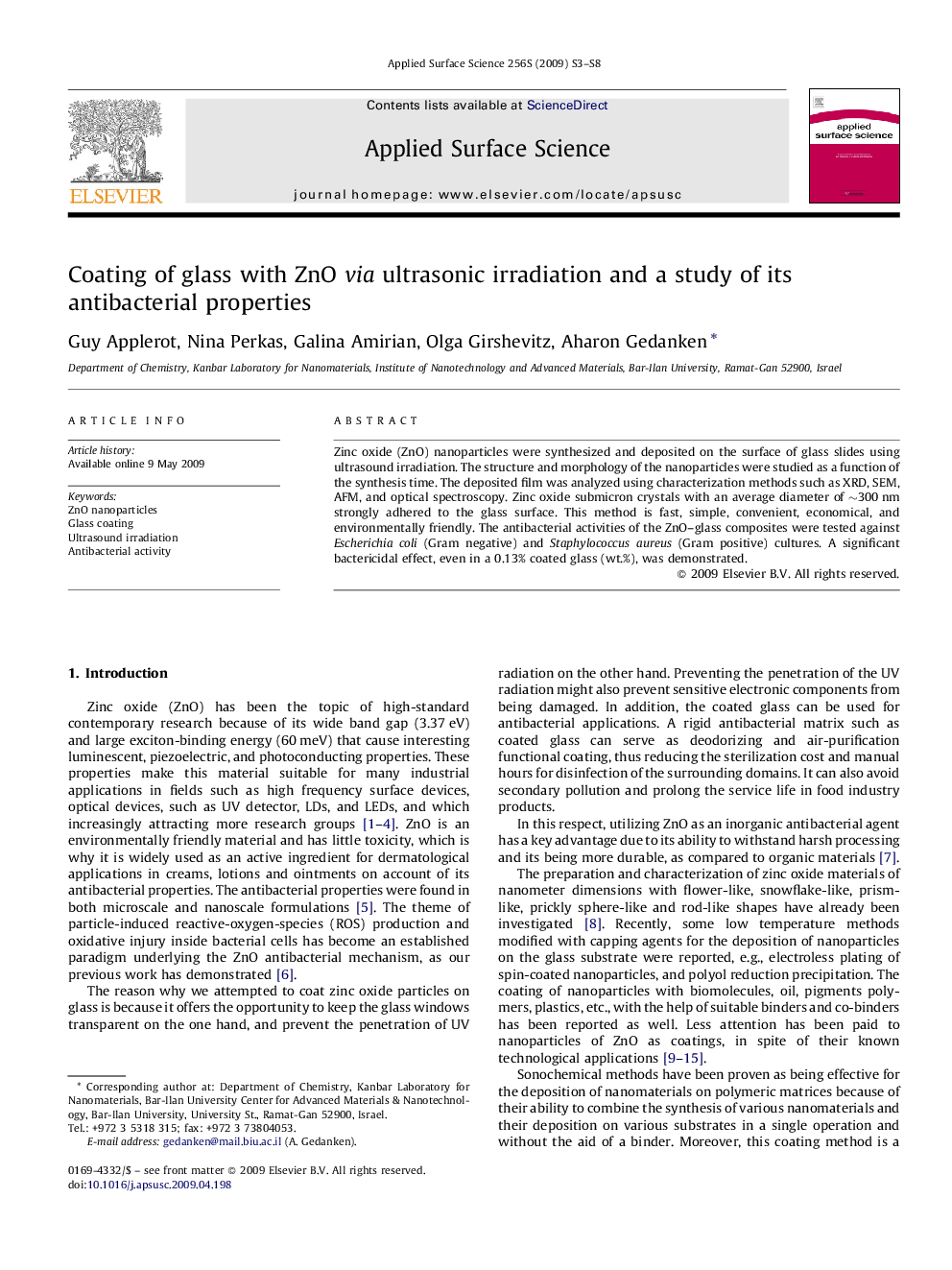| Article ID | Journal | Published Year | Pages | File Type |
|---|---|---|---|---|
| 5358768 | Applied Surface Science | 2009 | 6 Pages |
Abstract
Zinc oxide (ZnO) nanoparticles were synthesized and deposited on the surface of glass slides using ultrasound irradiation. The structure and morphology of the nanoparticles were studied as a function of the synthesis time. The deposited film was analyzed using characterization methods such as XRD, SEM, AFM, and optical spectroscopy. Zinc oxide submicron crystals with an average diameter of â¼300Â nm strongly adhered to the glass surface. This method is fast, simple, convenient, economical, and environmentally friendly. The antibacterial activities of the ZnO-glass composites were tested against Escherichia coli (Gram negative) and Staphylococcus aureus (Gram positive) cultures. A significant bactericidal effect, even in a 0.13% coated glass (wt.%), was demonstrated.
Related Topics
Physical Sciences and Engineering
Chemistry
Physical and Theoretical Chemistry
Authors
Guy Applerot, Nina Perkas, Galina Amirian, Olga Girshevitz, Aharon Gedanken,
